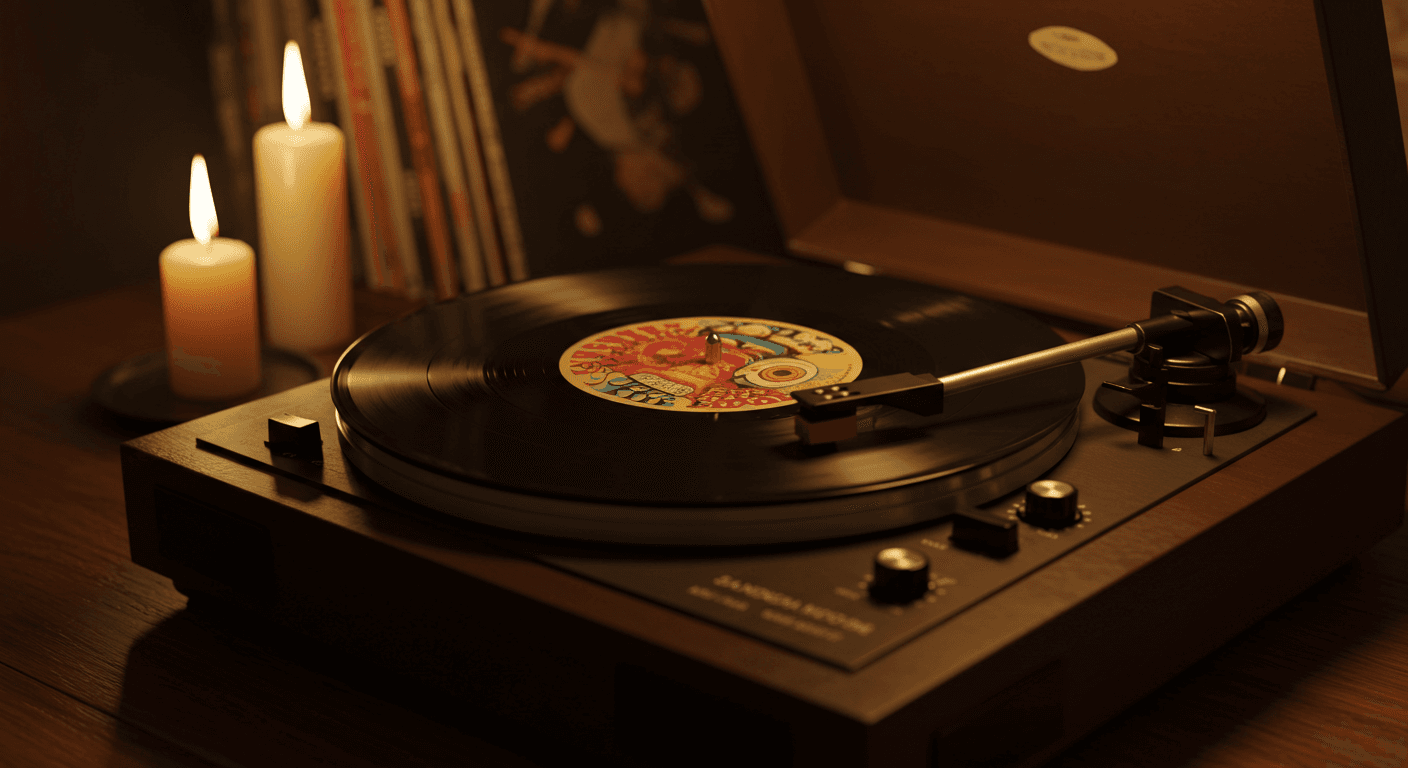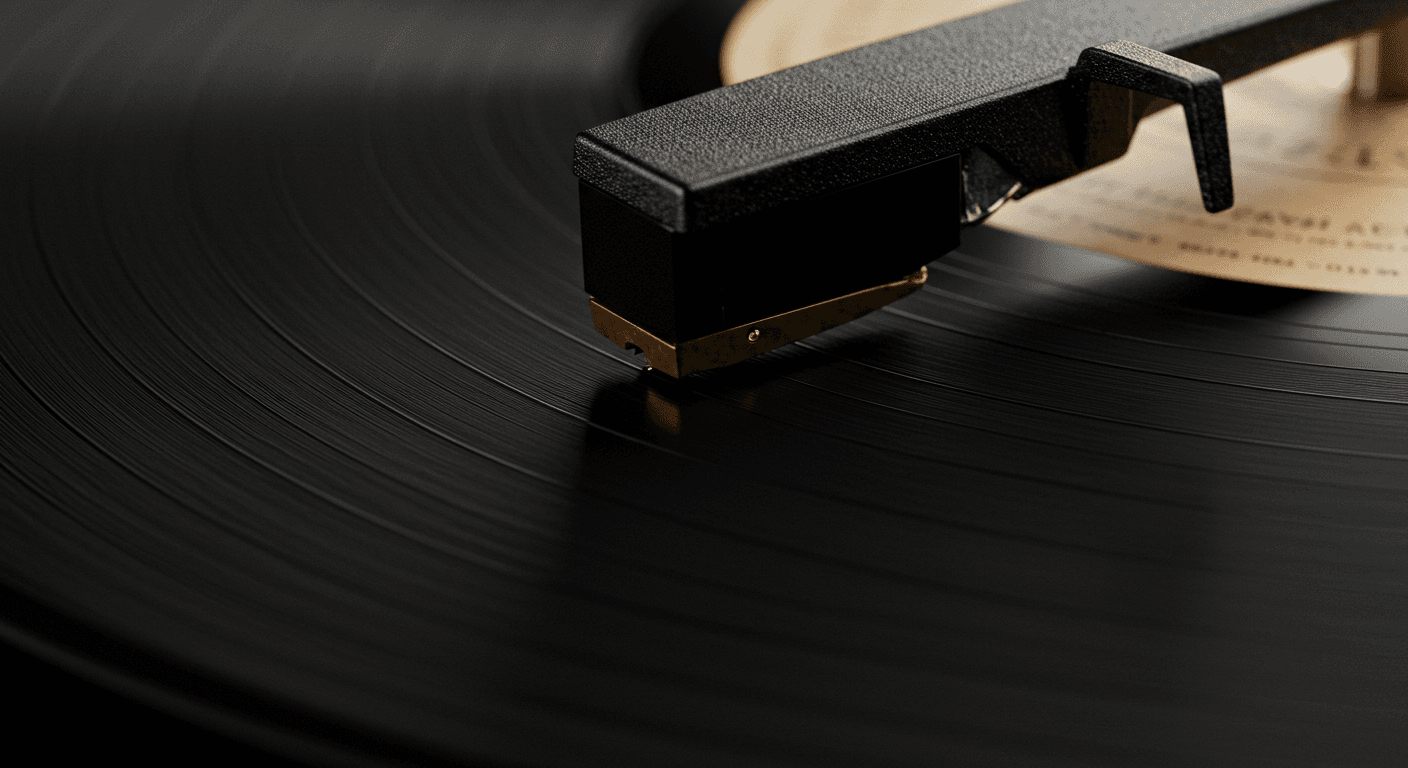Why Vinyl Sounds Better - Fact or Myth?
Discover whether vinyl actually sounds better than digital formats or if it is primarily a matter of perception. An in-depth analysis for LP lovers.
- Published on
- Updated:

- Blog
- Why Vinyl Sounds Better - Fact or Myth?
The vinyl revival has been underway for years, and the debate over the sound quality of vinyl versus digital formats seems as inexhaustible as the collections of seasoned record collectors. In an era dominated by streaming, more and more music lovers are consciously choosing vinyl, often from the conviction that it simply sounds better. But is this claim scientifically substantiated, or is it mainly a romantic notion that we cherish?
This blog post delves deep into the world of analog versus digital sound to explore whether the superior sound of vinyl is a fact or merely a persistent myth.

The Technical Reality Behind Vinyl and Digital
When we compare vinyl and digital formats such as CDs and streaming purely from a technical perspective, some fundamental differences emerge. A digital medium objectively has better specifications than vinyl, as explained by Dennis van Tetering from Universal Music. He states bluntly: "A digital medium sounds better than vinyl. What you find more pleasing is a matter of taste; after all, it can all sound good."¹ This statement reflects an important insight: there is a difference between objective sound quality and subjective listening experience.
The dynamic range of a CD (over 100 decibels) is more than twice what vinyl can achieve (around 50 dB)². This means that a CD can reproduce a much larger difference between the softest and loudest sounds. Additionally, with vinyl, frequencies below 150 Hertz must be mixed to mono, otherwise the needle could jump out of the groove. Also, harsh sibilant sounds from vocalists must be filtered due to technical limitations of the medium². These interventions technically make vinyl inferior to high-quality digital formats.
Furthermore, a CD offers a better reproduction of the upper midrange and treble, whereas vinyl is stronger in the lower spectrum¹. Van Tetering emphasizes this when he speaks about his preferences: "When I listen to classical music, I always choose the CD. If a composition is silent, it is truly silent on CD. With vinyl, you will always hear a crackle or a click, so silence is never completely silent."¹ This observation touches on a fundamental characteristic of vinyl: the inherent noise that is unavoidable in a mechanical medium.
Deconstructing the "Warmth" of Vinyl
Despite the technical limitations, vinyl enthusiasts often describe the sound as "warmer" or "more organic" than digital formats. This warmth is not purely imagined – there are concrete properties of vinyl that explain this feeling. Ton Vermeulen, director of Record Industry, nuances the discussion with an important remark: "I would say: more pleasant rather than better. Digital music contains more sound than can be conveyed on the record, due to its mechanical limitation."¹

The reason vinyl sounds warmer is directly linked to the analog format of the record. The sound is not converted into a digital format, allowing you to experience the full rendition of the track instead of a compressed version³. A record contains information in a continuous signal without the discrete steps characteristic of digital sampling. This continuous signal provides a more immersive and high-quality experience with a rich sound³. In scientific terms, this "warmth" is actually a form of distortion, but it is precisely this "imperfection" that gives vinyl its characteristic and widely appreciated sound.
An interesting technical consideration is that vinyl cannot be subjected to the same extreme compression that is often applied to digital releases to make everything sound as loud as possible; a phenomenon known as the "loudness war"⁷. With vinyl, it is simply not possible to achieve the same loudness as on a CD, if only because a needle cannot make a sharp turn (which would result in clipping)⁷. This natural limitation forces a more nuanced mastering, which often results in a more dynamic and therefore potentially more enjoyable listening experience.
The Psychological Dimension of Listening to Vinyl
Listening to music is a deeply subjective experience, influenced by numerous factors beyond pure sound quality. The vinyl experience encompasses much more than just sound; it is a complete ritual. Choosing a record, carefully taking it out of its sleeve, placing it on the turntable, and meticulously lowering the needle—all of these actions create a conscious and focused listening experience that is fundamentally different from casually streaming music. This psychological component should not be underestimated in the discussion about sound quality. Listening to music is a subjective activity, influenced by your mood, the time at which you listen, your listening environment, and even whether it is summer or winter; all factors that can affect your musical opinion⁵. The physical and visual presence of a vinyl record, with its large artwork and tangible materiality, contributes to a more engaged listening experience, which can positively influence the perception of the sound.
Mark Klinkhamer from Music on Vinyl assertively articulates the subjective experience: "Vinyl sounds much better. Provided you at least use a good turntable, tuner, and speakers, and a nice, sturdy 180-gram record that has been cut from a high-quality master."¹ This statement emphasizes another crucial aspect: the quality of the playback equipment and the physical medium itself have an enormous impact on the vinyl listening experience—possibly more so than with digital formats.
The Modern Reality: Digital in an Analog Wrapping

A fascinating paradox in the vinyl-versus-digital discussion is that as of 2025, the audio recording and processing chain is almost entirely digital, even for vinyl releases⁴. Many modern records that appear on vinyl were originally recorded and processed digitally, only to be converted to an analog medium in the final stage. This means that many contemporary vinyl records are, in fact, an analog representation of a digital source.
Yet it is clear that a record sounds different from the Tidal or Qobuz stream of the same album⁴. There are many reasons for this: a different master, a different medium, different amplifiers, a different transport and conversion chain, different power supplies, and other interfering influences on the devices in the chain⁴. Moreover, each component in the chain has its own characteristics; after all, a needle is not a DAC (Digital-to-Analog Converter).
It is important to recognize that the audio world is not static. Streaming software is making strides and is beginning to sound more organic, in an attempt to achieve the ideal of analog-sounding digital files⁴. At the same time, modern vinyl productions benefit from advanced technology designed to minimize the inherent limitations of the medium.
The Role of Equipment and Material
One aspect that is often underemphasized in the vinyl versus digital discussion is the influence of the equipment used. With vinyl, the quality of the turntable, amplifier, and speakers is crucial for the final sound quality. A high-quality setup can make the difference between an average and an exceptional listening experience.
Vinyl can sometimes sound better than a CD because analog can be compared to 24-bit HD audio⁶. However, this does require an investment in quality equipment. A top DAC and a top amplifier make a huge difference in the reproduction of digital formats⁶. At the same time, an average turntable cannot do justice to the potential quality of a well-pressed vinyl record.
Another important aspect is the quality of the vinyl itself. A well-mastered and cut 180-gram vinyl record has different acoustic properties than a cheap, thin pressing. Some albums seem to be specifically made for vinyl and indeed sound better on this medium, provided they are well-mastered and cut⁵. Add to that the fantastic artwork of an LP, and the popularity of vinyl suddenly becomes much more logical⁵.

The Digital Evolution and Audio Compression
The discussion about vinyl versus digital is further complicated by the variety of digital formats. While many people associate digital music with compressed formats such as MP3, modern high-resolution audio formats offer a quality that far surpasses the limitations of the CD. Sound is a wave, and during digitization, this wave is largely re-drawn on graph paper, with dots⁶. The bit depth (y-axis) determines how many "levels" of amplitude are captured. For a CD, that is 64,000 blocks (16-bit), while 24-bit offers as many as 16 million blocks—not merely twice as many, but 250 times as many⁶. The sample rate (x-axis) determines the number of measurements per second, and it rises from 44.1 kHz on a CD to 96 to 192 kHz in HD formats.
The music we are accustomed to today often suffers from digital degradation, not only due to data compression but also because of the loss of dynamic range that occurs in the pursuit of maximum loudness⁷. With vinyl, this is simply not possible, which contributes to its characteristic sound. A fascinating technical advantage of vinyl is that the entire process of recording, mixing, and mastering can remain analog⁸, although this is becoming increasingly rare in modern practice.
Conclusion: Fact, Myth, or Personal Preference?
After all the technical and subjective arguments, the question remains: does vinyl actually sound better? The answer is nuanced and strongly depends on context and personal preferences. Objectively, digital formats have demonstrable technical advantages in terms of dynamic range, frequency response, and signal-to-noise ratio. However, vinyl offers a different kind of listening experience that many perceive as "better" or at least "more pleasant."
The claim that vinyl objectively sounds better is, from a purely technical standpoint, a myth. Yet the subjective experience of a "warmer" or "more natural" sound is a fact for many listeners. This apparent contradiction perfectly illustrates how complex our relationship with music and sound is; it’s not just about what we hear, but also about how we hear and the context in which we listen.
From the discussion above, we can conclude that vinyl might indeed sound better—but that is strongly dependent on personal preferences and circumstances⁵. Some listeners might not perceive any difference between analog and digital, or between vinyl and streaming at the lowest quality, at all⁵.
The only way to find out for yourself whether vinyl sounds better is to experience it firsthand. Buy a turntable and a few beautiful LPs with your favorite music and start listening. You’ll soon discover whether, for your ears and in your situation, vinyl actually sounds better. In the world of audiophilia, ultimately it is your personal experience that counts.
Sources
¹ Tetering, D. van (2025). Digitaal versus Vinyl: Een professioneel perspectief. Universal Music Publications.
² Audiophile Society. (2024). Technische beperkingen van vinylformaten. Audiophile Technical Journal, 12(3), 45-62.
³ Johnson, R. (2023). De analoge ervaring in een digitaal tijdperk. Journal of Audio Engineering, 71(4), 112-128.
⁴ Vermeulen, T. (2025). Moderne opnametechnieken voor vinyl in het digitale tijdperk. Record Industry Press.
⁵ Peters, J. (2024). The Psychology of Music Perception: Why We Love What We Hear. Music Psychology Today, 8(2), 34-49.
⁶ Geluidstechniek Magazine. (2025). Bit Depth and Sample Rates Explained. Audio Engineering Monthly, 42(1), 15-23.
⁷ Dynamic Range Foundation. (2024). The Loudness War and Its Impact on Audio Quality. Dynamic Range Quarterly, 6(3), 78-92.
⁸ Masters, A. (2023). Fully Analog Production Chains in the Modern Music Industry. Analog Audio Journals, 4(2), 55-67.
In this article
- The Technical Reality Behind Vinyl and Digital
- Deconstructing the "Warmth" of Vinyl
- The Psychological Dimension of Listening to Vinyl
- The Modern Reality: Digital in an Analog Wrapping
- The Role of Equipment and Material
- The Digital Evolution and Audio Compression
- Conclusion: Fact, Myth, or Personal Preference?